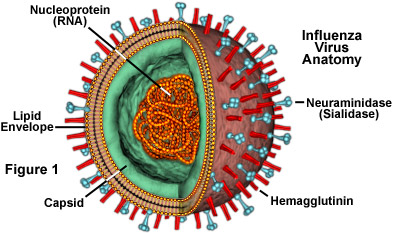Last year, more than 1.3 million new cancers were diagnosed in the United States. According to the American Cancer Society, more than 50,000 of these individuals were diagnosed with kidney cancer. However, not all hope is lost. More than 200,000 kidney cancer survivors are living in the United States right now. Recent advances in diagnosis, surgical procedures, and treatment options will allow even more patients to live with the disease, continuing to maintain their normal schedules and lifestyles.
Even though kidney cancer can be a fatal disease, there are signs that can suggest early forms of the cancer to help stop it from growing. Some of these symptoms can include, pain in the side that does not cease, lumps in the abdomen, weight loss, fever, and fatigue. However, the most extreme and known symptom for kidney cancer is blood in the urine. These symptoms can all be indicators of a form of kidney cancer; however, these symptoms may not always lead to the same conclusion. In fact, most often they are caused by other infections or a cyst. Also, there are many different suggestions to what the cause of kidney cancer is, but no one is totally sure.
The cause of kidney cancer is not known, but there are risk factors that have been identified. One major risk factor for kidney cancer is Von Hipple-Lidnau syndrome. VHL is a rare disease that runs in some families, and it is caused by changes in the VHL gene. An abnormal VHL gene increases the risk of kidney cancer and it also can cause cysts or tumors in the eyes, brain, and other parts of the body. Another risk factor can include long term dialysis. Dialysis is a treatment for people whose kidneys do not function normally and helps removes wastes from the blood. Being on dialysis for many years is a risk factor for kidney cancer. Another factor depends on gender. Males are more likely than females to be diagnosed with kidney cancer and it is recorded that it most often occurs in men in the ages of 50-70. Each year in the United States, about 20,000 men and 12,000 women learn they have kidney cancer. Other factors can include smoking, obesity, and high blood pressure. There are different forms and stages of kidney cancer, but first let’s examine how cancer works on a molecular level.
There are many things that can go wrong during the cell cycle and cause the cell to mutate. For example, UV radiation can damage DNA, or maybe a pair of sister chromatids failed to attach to the mitotic spindle properly. However, when something goes wrong during the cell cycle, checkpoints are typically there to stop the cycle and make sure the repair is made so that the replication can continue. In summary, these checkpoint-control systems help ensure the survival of eukaryotes by protecting the organisms from the uncontrolled growth of damaged cells. Also, genes that are involved in helping check over the cell cycle are called proto-oncogenes, and tumor-suppressors. Yet, both of these genes can deform and become dysfunctional and when these checkpoints during cell division are damaged, it can cause a mutated to cell to repeatedly divide into a mass called a tumor. Soon after, this tumor can become malignant, and metastasize, or spread, into the bloodstream or other vital organs. With that said, scientists and doctors have discovered different stages of kidney cancer and one form in particular.
One form of kidney cancer is renal cell carcinoma. A carcinoma is a medical term that refers to an invasive malignant tumor consisting of transformed epithelial cells. Renal cell carcinoma is a type of kidney cancer in which the cancerous cells are found in the lining of very small tubules in the kidney. Renal cell carcinoma is the most common type of kidney cancer in adults. Not only is there this form, but other stages, which doctors are currently trying to get a handle of to stop it. The first stage starts out as a tumor 7 centimeters or smaller that is only in the kidney. The second stage is when the tumor is larger than 7 centimeters and only in the kidney. For the next two stages, there are various results that follow the first two stages. However, the most common is during the third stage, a tumor has spread to an adrenal gland, the gland that sits right above the kidney, or in a layer of fatty tissue around the kidney. Next, during the fourth stage, the tumor may have metastasized to other organs which can include the bowel, the pancreas, or the lungs. Luckily, with this new found information, doctors have been able to develop treatments that will help slow the spreading of these malignant tumors.
Recent treatments for kidney cancer are surgery, radiotherapy, and chemotherapy. Surgery is the most common treatment for kidney cancer. It is a type of local therapy, and it treats cancer in the kidney and the area close to the tumor. An operation to remove the kidney is called a nephrectomy. Chemotherapy is also a type of systemic therapy. Anticancer drugs enter the bloodstream and travel throughout the body. The goal of this treatment is deter the cancer and stop the spreading of the tumor. Finally, another form of treatment is radiation therapy. This is another type of local therapy. It uses high-energy rays to kill cancer cells. Unfortunately, it affects cancer cells only in the treated area which can be less productive as some other therapies.
The treatment process, if one is diagnosed with kidney cancer, is crucial. Follow-up care after treatment for kidney cancer is extremely important. Even when the cancer seems to have been completely removed or destroyed, the disease sometimes returns because cancer cells can remain in the body after treatment. Many people in the United States have fought this cancer and survived, and many of them still live amongst us today. However, this does not mean it should be taken lightly, and one should take as many precautions as possible to help prevent it.






